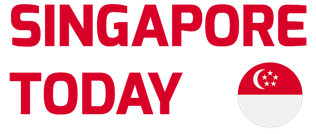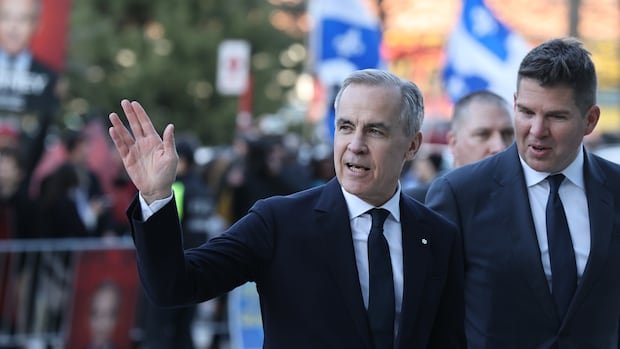The Liberal Party of Canada is promising to roll out almost $130 billion in new measures over the next four years that, when combined with existing spending, will add $225 billion to the federal debt.
In the fall economic statement, the Liberal government of former prime minister Justin Trudeau projected the deficit over the next four years to be $131.4 billion.
“Let’s be absolutely clear, this is not a normal fall update, budget lockup,” Liberal Leader Mark Carney said during a campaign stop in Whitby, Ont., on Saturday. “We are in the middle of the biggest crisis of our lifetimes.
“This is a plan that meets that moment in a way that is very prudent with peoples’ hard-earned tax dollars but bold in terms of where this country can go.”
One of the largest spending initiatives in the election platform the party unveiled Saturday is the previously announced one percentage point reduction in the lowest marginal tax rate taking it from 15 per cent to 14 per cent.
That’s a 6.6 per cent cut to the overall amount of tax paid in that bracket and it comes at a cost to the treasury of about $22 billion over the next four years.
Other significant expenditures in the party’s four-year plan include a pledge to increase existing defence spending by $18 billion in order to meet the two per cent NATO spending target.
“In a world of growing threats, Canada must be equipped to detect and deter those who would attack our sovereignty,” the platform said.
“We have a plan to meet our NATO commitments and ensure that the Canadian Armed Forces (CAF) has the equipment they need to defend our sovereignty.”
Aside from new equipment, that additional spending will go toward giving CAF members a raise while improving housing and other benefits, modernizing the recruitment process and cracking down on sexual misconduct.
Watch | Carney unveils costed Liberal platform:
Carney’s plan to double the pace of home building, by creating a standalone agency called Build Canada Homes (BCH), will cost about $3 billion annually over the next four years.
Describing as a “lean, mission-driven organization,” BCH will act as a developer, overseeing the construction of affordable housing in Canada.
A re-elected Liberal government is also pledging to provide funding to municipalities in order for them to cut development charges in half, at a cost of $1.5 billion annually over the next four years.
When combined with the more than $4 billion in tax incentives to repurpose buildings into housing, the Liberal platform is pledging to spend another $22 billion over four years.
The four-plank budget
The platform lays out a number of spending initiatives across the economy that fall into one of four planks:
- Unite: This plank includes things like supporting and shoring up the arts, rural transit, Indigenous loan guarantees and CBC/Radio-Canada. When taken together, infrastructure funding earmarked for projects such as high-speed rail and digital, community and health infrastructure adds up to $20 billion over four years.
- Secure: This plank includes the $18 billion in new defence spending as well as more than $4 billion in supports and other tariff response funding. It also includes about $1.7 billion in additional spending to help the RCMP hire and train 1,000 more personnel, establish a new training academy and boost pay for recruits.
- Protect: This plank covers a number of health-care initiatives such as helping to create more medical school residency programs, boosting youth mental health, reducing the amount of paperwork doctors have to do and establishing an in-vitro fertilization (IVF) program. When combined, these and other health-care initiatives will cost about $3.5 billion over the next four years.
- Build: The final plank in the Liberal platform includes the $22 billion in housing money. It also includes the $12.5 billion it will cost the federal treasury for scrapping the hike to capital gains and the $12.5 billion to extend the Accelerated Investment Incentive.
Revenues and savings
The platform says it will be able to boost government revenues over the four years by $51.8 billion, with $20 billion of that coming from tariffs alone in 2025-26.
The Liberal platform only accounts for tariff revenue in the first year of its four-year plan. Carney explained Saturday that to count on that revenue in years out would not be “prudent.”
“We don’t want to rely on those tariff revenues. Canada is not America, so you might see other parties who assume that’s going to continue and that’s going to be a source of revenue. That’s a bad outcome for the country,” Carney said.
“We don’t think that to assume that those tariff revenues are in place is prudent at all.”
The rest of the projected increase in revenue will come from two sources.
The first revenue stream will come from increasing tax penalties and fines through the Canada Revenue Agency (CRA) to the tune of $3.8 billion over four years.
The second will come from “increased government efficiency,” which will begin with $6 billion in savings in 2026-27, rising to $9 billion the following year and hitting a peak of $13 billion a year in 2028-29.
The platform follows on Carney’s promise to separate operational spending, the annual cost of programs and other expenditures from capital investments — that is, the investment in things like infrastructure.
The operating budget deficit this year is predicted to be just over $9 billion, which the Liberal platform predicts it can get down to just $220 million by 2028-29.
Overall, in 2025-26 the Liberal platform predicts that the annual deficit will be 1.96 per cent of GDP at $62.3 billion. The following year, the debt-to-GDP ratio would drop to 1.83 per cent as the annual deficit shrinks slightly to about $60 billion.
In 2027-28 the deficit would drop again to just under $55 billion (1.61 per cent of GDP) before shrinking further in 2028-29 to $48 billion, which is 1.35 per cent of GDP.
In the fall economic statement the deficit in 2025-26 was projected to be $42.2 billion, before dropping to $31 billion in 2026-27, $30.4 billion in 2027-28 and $27.8 billion in 2028-29.



